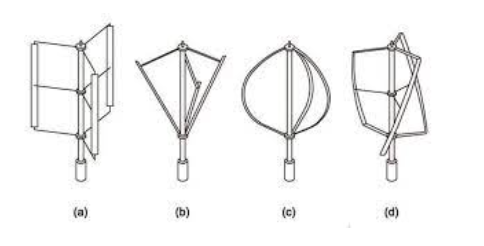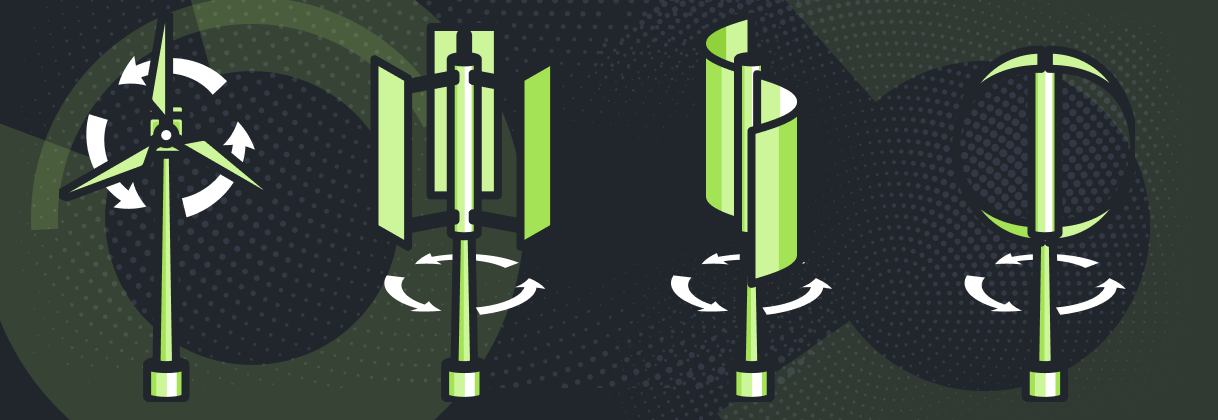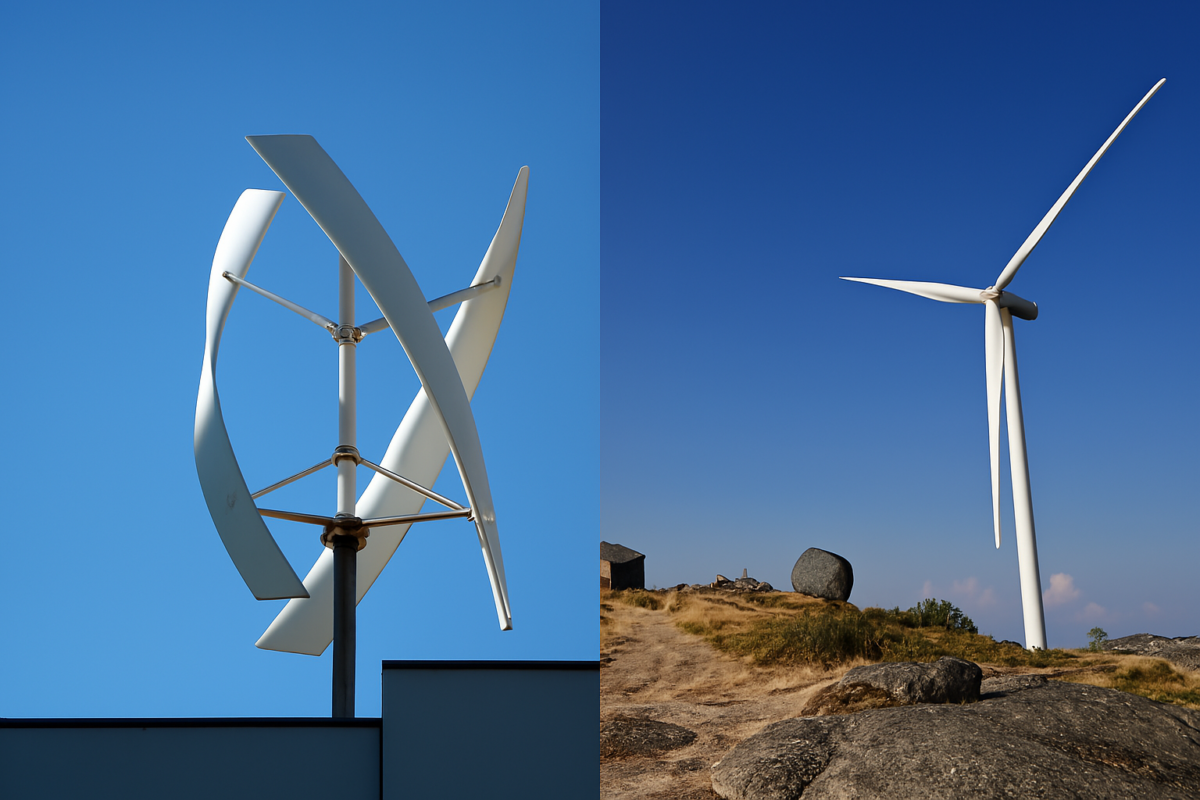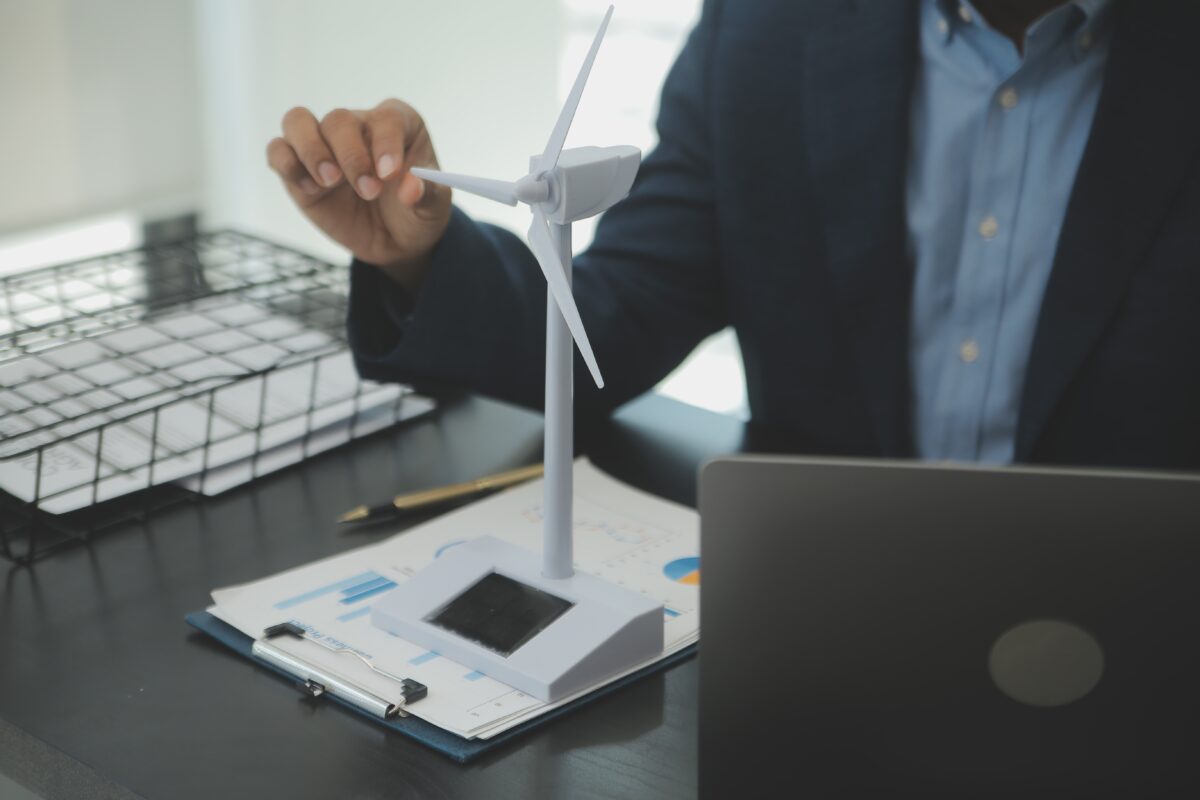1. Introduction. Overview of Small Wind Turbines Types
In this article, we will take an in-depth look at Small Wind Turbines Types – their features, advantages, and differences in design.
1.1 Role in thea Sustainable Energy Future
Small wind turbines (SWTs) play a key role in transitioning to sustainable energy sources. Unlike large wind farms, SWTs are more adaptable to various conditions and can be used in diverse setting from remote villages to urban areas. They are an essential component in the diversity of renewable energy sources, contributing to the reduction of fossil fuel dependence and carbon emissions.
1.2 Adaptation to IoT and Innovation Prospects
SWTs are particularly promising for integration with IoT technologies, allowing remote control and optimization of their operation, as well as integration into intelligent energy management systems. This opens up opportunities for creating smarter and more efficient energy systems, adaptable to changing conditions and user requirements.
1.3 Practical Applications and Potential
SWTs are used in various scenarios, such as
powering remote and sparsely populated areas, improving network reliability in urban areas, and creating autonomous power sources for IoT devices. Their flexibility in terms of placement and scalability makes them ideal for use in a wide range of applications, from individual households to industrial facilities.
Our next generation of small wind turbines makes the transition to wind energy easier. We offer a free, comprehensive on-site feasibility study to help you find the best solution for your location, calculate potential savings and identify applicable incentives. For more information or to speak to our experts, register here.
1.4 Integration with Innovations and Future Development
The future of SWTs involves integration with the latest materials and design technologies, enhancing their efficiency and reliability, as well as the development of hybrid systems combining different types of generators and rotors. Research prospects foresee the use of advanced materials for blades, integration with adaptive control systems, and
improvement of energy conversion technologies to increase the overall efficiency of the system.
2. Classification of Rotors
Below are the main Small Wind Turbines Types distinguished by their design and operational principles.
2.1 Horizontal Rotors

Horizontal Axis Wind Turbine Diagram
Structure: Horizontal rotors are characterized by an axis of rotation parallel to the airflow. Such rotors usually require an orientation mechanism to align with the wind direction.
Advantages: High wind energy utilization efficiency, making them suitable for areas with high and medium wind speeds.
Disadvantages: Dependence on wind direction and complexity in blade production, potentially increasing production costs.
Application Examples: Highly-reliable systems with high power requirements.
2.2 Vertical Rotors

Darrieus Rotor Designs
Structure: The axis of rotation is perpendicular to the airflow. There is no need for an orientation mechanism.
Advantages: High wind energy utilization efficiency, compactness, no dependence on wind direction.
Disadvantages: Low initial torque, difficulties with self-starting.
Application Examples: Used in limited space conditions, suitable for medium- and high-wind speeds.

Savonius Rotor Designs
Structure: Similar to Darrieus rotors, the axis of rotation is perpendicular to the airflow.
Advantages: High initial torque, simplicity of design, and low production costs.
Disadvantages: Low wind energy utilization efficiency and low energy generation potential.
Application Examples: Ideal for conditions with low wind speeds, requirements for low noise levels, and high reliability.
2.3 Comparative Analysis
Efficiency: Horizontal rotors are generally more efficient in utilizing wind energy compared to vertical ones. However, vertical rotors, especially of the Darrieus type, can be effective in conditions with variable wind directions.
Production Complexity: Horizontal rotors require more complex production and high precision in blade manufacturing. Vertical rotors are easier to manufacture which cuts the costs.
Initial Torque: Savonius rotors have a high initial torque, which makes them ideal for applications requiring a quick start.
The analysis points out that the choice of rotor type for a small wind turbine largely depends on the specific operating conditions and system requirements. Each type has its unique advantages and limitations that should be considered when designing and deploying the system.
| Parameter | Horizontal Rotors (HAWT) | Darrieus rotors (VAWT) | Savonius rotors |
| Wind efficiency | Up 45% | 35% – 45% | 15% – 25% |
| Optimum wind speed (m/s) | 3 – 25 | Low and medium | Less than 6 |
| Initial torque | Medium | Low | High |
| Production complexity and costs | High | Medium | Low |
3. Practical Application and Optimization of Rotors
3.1 Horizontal Rotors (HAWT)
Optimization: Includes the development of aerodynamically optimized blades, the application of variable pitch technologies, and passive yaw mechanisms
Application: Widely used in medium and high wind speed conditions. Ideal for places with high power and reliability requirements.
3.2 Darrieus Rotors (VAWT)
Optimization: Research focuses on the aerodynamic optimization of blades, including the application of special aerodynamic profiles such as dimples and Gurney flaps.
Application: Efficient in limited space conditions, such as urban or suburban areas.
3.3 Savonius Rotors
Optimization: Focus on blade design and geometric parameters, such as aspect ratio and blade configuration, to improve efficiency.
Application: Particularly suitable for places with low wind speeds and high reliability requirements, such as regions with limited wind resources.
The data is displayed in the picture below, which shows the key aspects of optimization and practical application of these three types of rotors. The chart provides a comparison of the optimization focuses and main areas of application for each rotor type.

Comparing Optimization and Application of Rotors
This chart shows the differences between optimization priorities and application areas of each rotor type, which is key in choosing relevant rotor types for conditions and requirements.
4. Future Prospects of Small Wind Turbines
Additional research by the Fraunhofer Institute for Wind Energy Systems (IWES) is contributing to the advancement of rotor optimization techniques.
The renewable energy sector is rapidly evolving, and staying updated with emerging trends is crucial.
By analyzing Small Wind Turbines Types, we can gain valuable insights into innovative design solutions and anticipate the development of more efficient and sustainable systems.
Before discussing the future prospects of Small Wind Turbines (SWTs), it is essential to understand the concept of the Internet of Things (IoT). IoT is a framework where physical objects (“things”) are integrated with sensors, software, and other technologies to communicate and exchange data with other devices and systems over the internet. This integration allows objects to collect, exchange, and analyze data, enhancing their functionality and interaction with the external world.
4.1 Integration with IoT
Automation and Control: SWTs can be integrated with IoT for automated monitoring and optimization of their operation. This includes equipment condition monitoring, maintenance forecasting, and adaptation to changing wind conditions.
Smart Grids: Integrating SWTs with IoT enables them to interact efficiently with power grids, ensuring load balancing and improved energy supply reliability.
4.2 Improving Materials and Blade Design
Innovative Materials: Research focuses on using lighter and more durable materials to enhance blade efficiency and longevity.
Aerodynamic Design: Developing more efficient aerodynamic profiles and technologies, such as concave edges and winglets at the blade ends, to improve turbine efficiency.
4.3 Development of Hybrid Systems
Combination of Generator and Rotor Types: This includes developing systems that combine different technologies, such as hybrid systems integrating SWTs with solar panels or other renewable energy sources.
Adaptation to Various Conditions: Hybrid systems can be optimized to operate in different climatic conditions, providing more stable and reliable energy supply.
4.4 Sustainable Development and Ecological Initiatives
The prospects for SWT development are closely linked to advancements in IoT, improvements in materials and design technologies, and the growing demand for sustainable and eco-friendly energy sources. These development directions open new opportunities to enhance the efficiency, reliability, and accessibility of Freen small wind turbines.
Our next generation of small wind turbines makes the transition to wind energy easier. We offer a free, comprehensive on-site feasibility study to help you find the best solution for your location, calculate potential savings and identify applicable incentives. For more information or to speak to our experts, register here.
Are you interested in how you can use small wind turbine technology? Contact us to book a free survey and assess the wind potential in your area.
Conclusion

Thus, understanding and choosing the right Small Wind Turbines Types is a crucial step in the design and optimization of small wind turbines, contributing to the development of sustainable energy solutions.
FREEN, a company specializing in the manufacturing of small wind turbines, adopts an innovative approach to the use of Darrieus rotors. This choice is deliberate, as Darrieus rotors are known for their efficiency in varying wind conditions and compact structure, which makes them ideal for diverse operating environments, including urban and rural areas.
For FREEN’s clients, this translates into access to cutting-edge renewable energy technologies. FREEN’s wind turbines provide reliable, efficient, and eco-friendly energy solutions, reducing dependency on
conventional energy
sources and minimizing the carbon footprint. The integration with modern technologies, such as IoT, further enhances the usability and efficiency, offering FREEN’s clients advanced solutions in sustainable energy.






